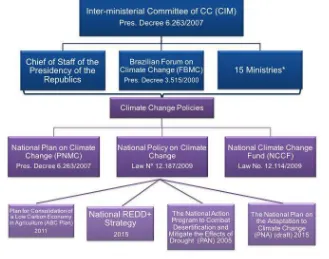Integrating mitigation and adaptation in climate and land use policies in Brazil: a policy document analysis
Full text
Figure




Outline
Related documents
Using nationally representative data from Nepal, this paper focuses on the time trends and predictors of four core WHO ‐UNICEF complementary feeding indicators that assess the
The Nepali Government enlisted the support of the Nepal Participatory Action Research Network (NEPAN), a member-based organization promoting participatory approaches to development,
A centrifuge decanter; consists of a solid cylindirical bowl rotating at high speed, a scroll rotating at the same axis with a slightly different speed, a drive
Catalysts of dissension and frequent triggers of violence are provided by weak governance, political contention and misconduct, polarization among ethnic and religious groups,
plaintiffs’ allegations effectively amount to lack of substantiation claims rather than affirmative misrepresentation claims. See generally Amended Complaint, Bezdek, supra
MOOC design; Continuing Professional Development; Open Educational Resources; Open Educational Practices; Scenario-based Learning; Learning Experience
The first equation relates the monthly average yield on Irish ten-year sovereign bonds to the vector of macroeconomic variables, the banking variables, and the OMT and
This paper examines the lead lag relationship among stock prices and four important monetary variables which include money supply, T-bill rates, exchange rates, and inflation for





